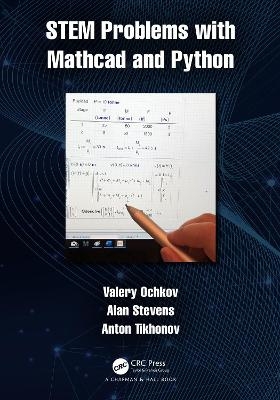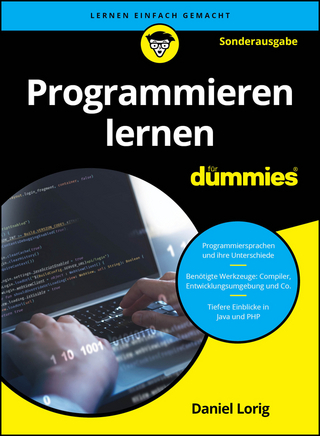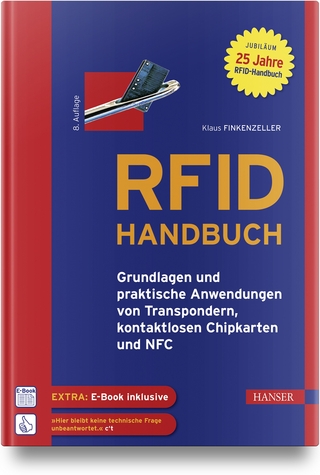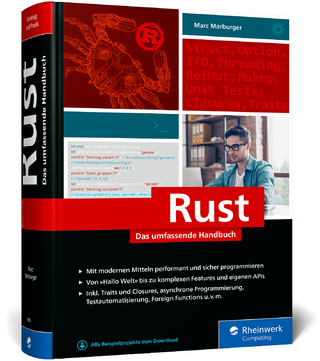
STEM Problems with Mathcad and Python
Chapman & Hall/CRC (Verlag)
9781032131658 (ISBN)
Features
Suitable for undergraduates and early postgraduates who need simple and accessible guidance for solving practical interdisciplinary technical problems
Can be used as an additional textbook in a variety of topics, including Calculus, Linear Algebra, Analytical Geometry, Discrete Mathematics, Computer Science, Computational Mathematics, Scientific Visualization, Computer Graphics
Gives computer users access to an exciting new hobby - solving complex problems described in fiction
Dr Valery Ochkov is Professor at Moscow Power Engineering Institute (Technical University – MPEI – www.mpei.ru) in the Department of Theoretical Basics of Heat Engineering. He earned his Ph.D. in 1979 on "Research of processes and development of technology for magnetic water treatment in the energy sector." In 2006 he defended his doctoral dissertation on the topic "Improving the design and operation of power plant equipment using modern information technologies." In 2005, he founded his own private company, which is engaged in the creation of computer programs and simulators for the training of personnel in thermal, hydraulic and nuclear power plants. Dr Alan Stevens received a Bachelor’s degree in Physics from the University of Warwick, then a PhD for research in Theoretical Physics from the University of Essex. He then spent most of his working life at Rolls-Royce as a mathematical modeller, dealing mainly with engineering heat transfer and fluid flow; also spending a certain amount of time teaching engineering mathematics to engineers at various Rolls-Royce sites. In retirement he has sat on several committees of the Institute of Mathematics and Its Applications (IMA) in the UK, including its Executive Board and governing Council. Dr Anton Tikhonov received his bachelor's degree in semiconductor physics and his master's degree in applied mathematics from the Moscow Power Engineering Institute (MPEI). He has spent his entire working life at the Moscow Power Engineering Institute, where he received his PhD for research on semiconductor devices. He is currently a professor at MPEI. His research interests are information technology in education, scientific visualization.
1. Portrait of the Roots of the System of Equations. 2. Oval and Ellipse. 3. Reading Fiction and Solving Linear Equations. 4. Trust but Verify. 5. Comet of 1811: Check Harmony with Algebra. 6. Running along the Route given by Pierre de Fermat, or Geometric Optics. 7. Patterns on a Complex Plane. 8. Rectangle Mappings on the Complex Plane. 9. Monte-Carlo: Shapes and Ships. 10. Pseudo-Parallelism. 11. A Catenary: to Step or Ride Over? 12. Round and Round. 13. Iterations and Fractal Sets of Mandelbrot and Julia. 14. Water Digital Twin: Cloud Functions, Correct Temperature Units. 15. Hydropower Thoughts and Calculations when Looking at a Banknote or Spline Interpolation. 16. Cellular Automatons. 17. Arrays and Images. 18. Three Circles tied with an Elastic Band Or New Pendulum.
| Erscheinungsdatum | 21.11.2022 |
|---|---|
| Zusatzinfo | 1 Tables, black and white; 172 Line drawings, color; 191 Line drawings, black and white; 8 Halftones, color; 2 Halftones, black and white; 180 Illustrations, color; 193 Illustrations, black and white |
| Sprache | englisch |
| Maße | 178 x 254 mm |
| Gewicht | 1000 g |
| Themenwelt | Mathematik / Informatik ► Informatik ► Programmiersprachen / -werkzeuge |
| Mathematik / Informatik ► Informatik ► Software Entwicklung | |
| Mathematik / Informatik ► Informatik ► Theorie / Studium | |
| Mathematik / Informatik ► Mathematik ► Angewandte Mathematik | |
| ISBN-13 | 9781032131658 / 9781032131658 |
| Zustand | Neuware |
| Informationen gemäß Produktsicherheitsverordnung (GPSR) | |
| Haben Sie eine Frage zum Produkt? |
aus dem Bereich


